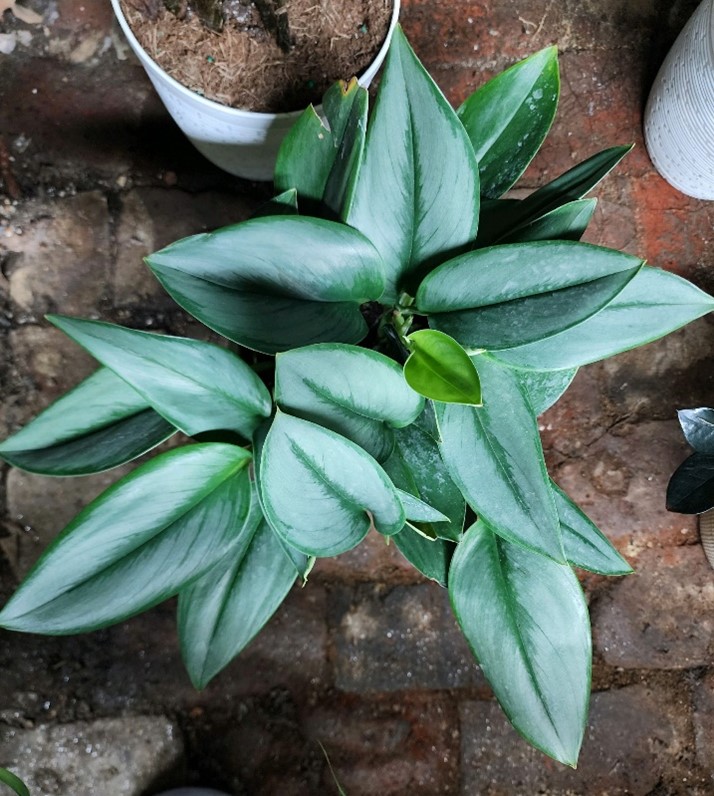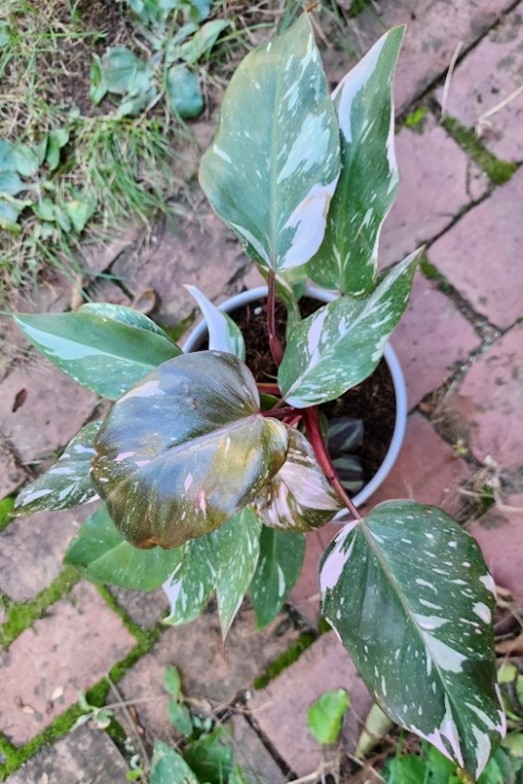As the old saying goes, “Variety is the spice of life.” Nothing could be more true for houseplants. I was bitten by the houseplant bug as a little kid when I found a book on the subject in an end table. All the variety of plants was amazing to me. Now by variety, in this sense, I am talking about species. There were so many species that would fill our homes and bring us joy. As time marched on, we have seen that number of species kept indoors skyrocket. As people became better at keeping the more common houseplants, the tougher to keep groups started to get more attention. As all this is happening, selective breeding and hybridizing has made some incredible varieties of plants. In the past, traditional propagation methods would take years just to see the plants in stores, and then they would cost exorbitant amounts of money! Now that tissue culture is an option, these unique individuals can be massed produced in a record amount of time, and become available to the public for a reasonable price (or they should be).
As one can imagine, I could fill encyclopedias with all the wonderful new plants out there. For the sake of brevity, I will stick to a few of my newer favorites for this blog. There are a few groups I will talk about that are my all-time favorites with amazing new additions, and then talk of a few odd balls that I think everyone should have. The best part of all this is that the big box stores just started carrying many of them. Now normally I prefer to patronize the garden centers, but during COVID, the prices of houseplants jumped so dramatically that I had a hard time justifying purchasing one. These plants are in no way some sort of special list, but just ones that have caught my eye this past summer. Of course, there were too many to list, but these are a handful of some of the best.
The first plant on my list is related to the famous “Pothos” types. I can still remember buying the mostly green-leaved common type. It was easier to grow than philodendrons, and not as finicky about watering. The Holy Grail’s at the time were the ‘Golden’ and ‘Marble Queen’ versions. The more broken the pattern on the leaves, the more desirable the plant. Nowadays, these two types are very common and in exceptional form. I am not sure if the original green variety is even sold anymore! The genus underwent some revisions over the years, but the common name “pothos” stuck. This new type of pothos is called Scindapsus treubii ‘Moonlight.’ This stunning plant has silver leaves with green margins and a green stripe down the middle. Care is similar to the more familiar varieties, but be sure to give it plenty of bright, indirect light.
Next, we jump to another familiar genus of plants – the Philodendrons (this is both a common name and a scientific name). These heart-shaped-leaved plants have always had a place in our homes. This genus, however, is one of the most diverse! There have been many new varieties brought to the market. The nice part is, some of them are finally readily available, and the price is really coming down. The plant I am talking about is Philodendron micans, which was its previous scientific name and now has become its common name. It is correctly known now as Philodendron hederaceum var. hederaceum. Either way, this is a beautiful plant with velvet-like leaves. Like all philodendrons, it prefers a rich, well-draining, moist soil. Soggy soil will be the death of any of the philodendrons. The other interesting thing about this plant is the leaf color. They can vary from a green to a red/maroon. Younger leaves can even have a yellow-orange complexion. Avoid direct sun, or the leaves can burn. Bright, indirect light is best for this plant as well.
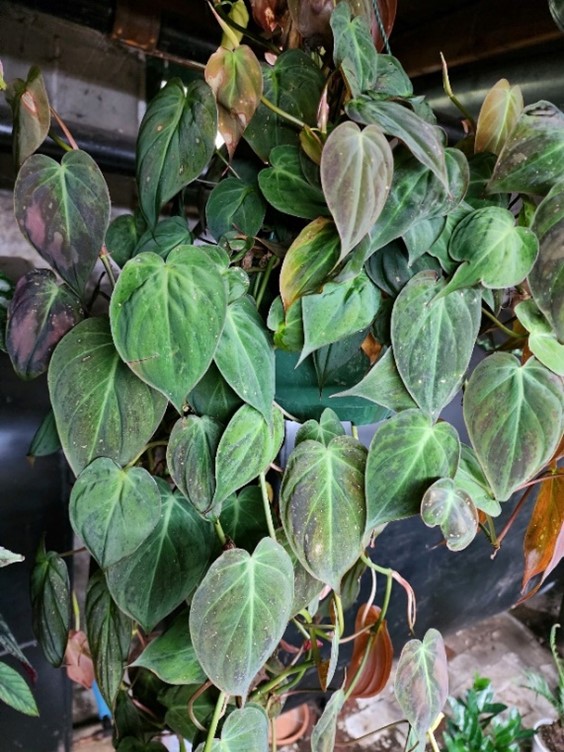
The next two plants on my list are both Philodendron species, but not the kind that are found in hanging baskets. I am talking about the large-leaved floor plants that do best with a moss pole to climb. They come in all different colors and patterns. I honestly have trouble picking my favorite as they all have a certain amount of charm and uniqueness. The two I am listing here are the newest ones in my collection, so they are getting some special attention. The first is Philodendron ‘Birkin.’ This plant does not actually occur in nature, but instead is a mutation that popped up in captivity. Bright light will help the plant colors look their best, but once again avoid direct sun or you will scorch the leaves.

A related plant with a similar growth habitat is Philodendron erubescens ‘Pink Princess.’ This plant has pink variegation randomly in the leaves. he amount of pink can vary in each leaf, and some can be mostly pink. The brighter the light, the better the color of this plant. Until recently, this cultivar would cost $100-$150 or more for a four-inch pot. I have just started seeing this in some big box stores for $20 in a six-inch pot. Care is the same for the other philodendrons talked about in this article. These large floor-type can get boron deficiency rather easily, and then not unfurl the new leaves properly. The best way to avoid this is to use a granular fertilizer, as these usually have this element. Read the information on the package to determine if this element is in the fertilizer you are planning to use. It is generally absent from the common already prepared liquid blends.
The next new plant comes in two types. Truthfully, it has been around for a while, but has a really unique appearance and a brand new variety. I am talking about Zamioculcas zamiifolia. This plant looks very unique from all our other houseplants with its oval leaves growing along fleshy stems. They can get to about 3 feet tall. They are very fast growing, and can tolerate our indoor home conditions rather well. My new favorite is Zamioculcas zamiifolia ‘Dowon,’which instead of green is all black. Bright light will help maintain its dark coloration. Although the new growth may be green, with time it will darken up like the rest of the plant. This genus can handle moderate to low light, but should be watered much less than the typical houseplant. Overwatering will cause rotting of the fleshy stems. Unfortunately, once you realized you watered too much, it can be too late and you might lose the whole plant.
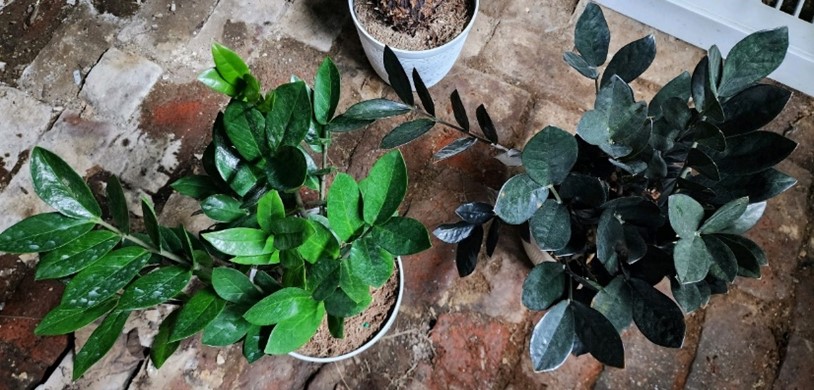
My last selection for this article is the Blue Star Fern, Phlebodium aureum. Although they sound exotic, they are fairly easy to come by. I have even seen them recently at a big box store grown in hanging baskets. I do not prefer them grown in this way, as they look better as a floor plant. I reserve the hanging baskets for the plants that exhibit a trailing growth habit. Unlike many ferns, this one tolerates the lower humidity in our home quite well. If it dries between waterings, it may start to wilt, but quickly perks up with prompt watering. Do not let the wilting get beyond slight drooping, however. It seems to be fairly easy and forgiving. The beautiful blue foliage is hard to capture in a photograph but looks stunning when grown near some “normal” green-leaved plants.
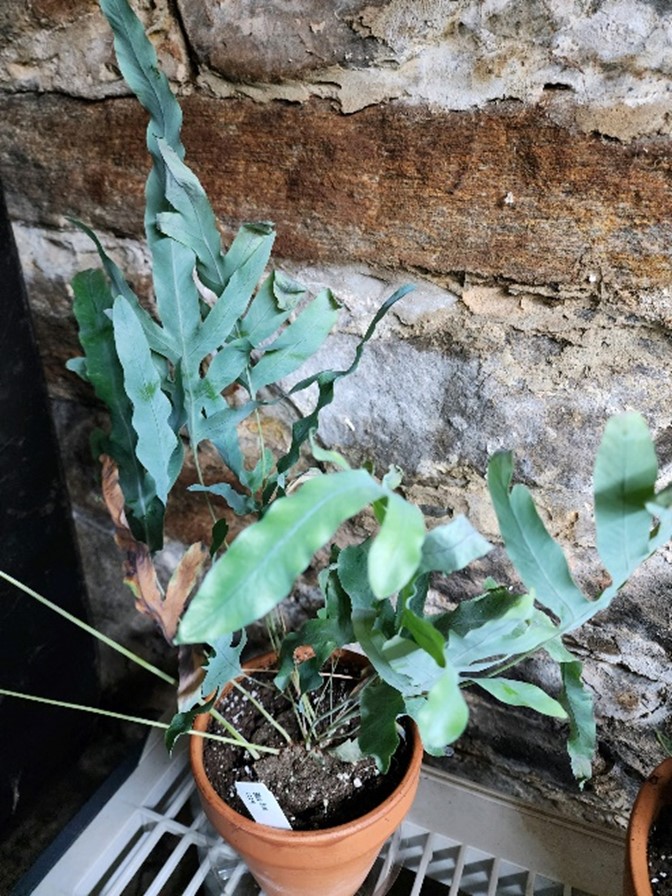
For all these reasons, I recommend adding one of these plants to your home/collection. It will certainly be a conversation piece for all your guests!
Matt Lisy
